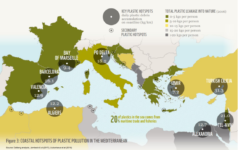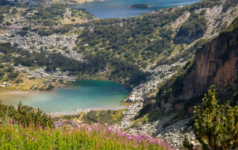Dalberg uses cookies and related technologies to improve the way the site functions. A cookie is a text file that is stored on your device. We use these text files for functionality such as to analyze our traffic or to personalize content. You can easily control how we use cookies on your device by adjusting the settings below, and you may also change those settings at any time by visiting our privacy policy page.
From Danger to Prosperity
Doñana is an internationally recognized wetland that has economic, environmental and social values The Doñana wetland complex includes a World Heritage site, a natural park and four Natura 2000 sites.
It is famous for being Europe’s most important area for migrating birds. Doñana is spread along the Guadalquivir River at its estuary on the Atlantic Ocean in Andalusia in southern Spain. Its diverse ecosystems include lagoons, marshlands, scrub woodlands, pristine beaches and sand dunes. Doñana National Park, the largest protected area in the complex, was inscribed as a UNESCO Biosphere Reserve in 1980, a Ramsar Wetland of International Importance in 1982, and a UNESCO World Heritage site in 1994. Further, Spain designated the area surrounding the national park as a protected natural park, and established four areas as European Natura 2000 sites, which aim to ensure the long-term survival of Europe’s most valuable and threatened species and habitats.
Doñana’s diverse ecosystems provide habitats for up to six million migratory birds each year and half a million wintering birds. The area is home to over 4,000 species, including several rare and globally threatened birds. Doñana harbours over 1,500 plant species, almost 2,000 animal species and 500 species of microorganisms. Many of these are rare and iconic animals, including the imperial eagle, the marbled teal, and the white-headed duck. Doñana is one of only two habitats for the endangered Iberian lynx, which is the world’s rarest feline species. Its marshes are considered to be one of the most important wetlands in Europe, as 75 per cent of European bird types can be found there. For migrating birds, it is a major stopover point on routes between Africa and Europe, and it is also one of the largest heronries in the Mediterranean region.
In addition to its environmental and conservation values, Doñana provides important local and global ecosystem services. Wetland ecosystems, such as Doñana, provide many services that support the livelihoods and well-being of people. These include fish, fresh water supplies, climate regulation, flood regulation, and coastal protection. In particular, Doñana provides important air and water purification, water regulation, and soil fertilization services. It also acts as a net carbon sink, meaning that it removes carbon from the atmosphere, which helps to mitigate the impacts of climate change. Doñana also provides for important cultural services, such as nature tourism, which generates value for the local population. Doñana’s ecosystem services support socioeconomic activity, including providing jobs for the region’s 200,000 inhabitants. Doñana’s unique biosphere attracts visitors from around the world. The value of beach, cultural and nature tourism in the park is estimated at €74 million per year, and the industry is estimated to employ almost 50,000 people. Doñana also supports agriculture, which is the largest employer in the region. It has the most productive rice fields in Europe, and produces 70 per cent of the strawberries grown in Spain. Further, the estuary and the coastal zone bordering Doñana is an important fish and prawn spawning ground and nursery that benefits fisheries all over the Gulf of Cádiz.
Harmful industrial activities have depleted Doñana’s water sources, and are threatening Doñana’s environmental, social and economic values.







